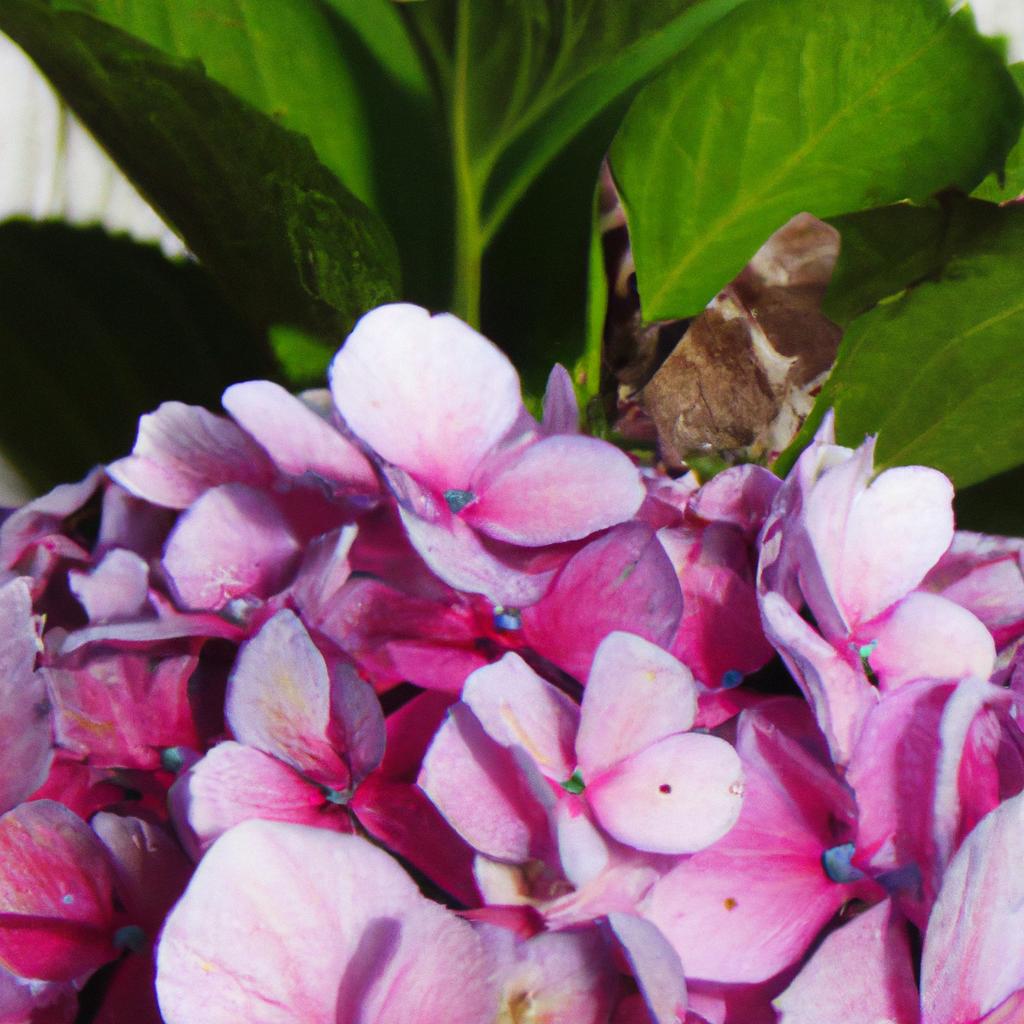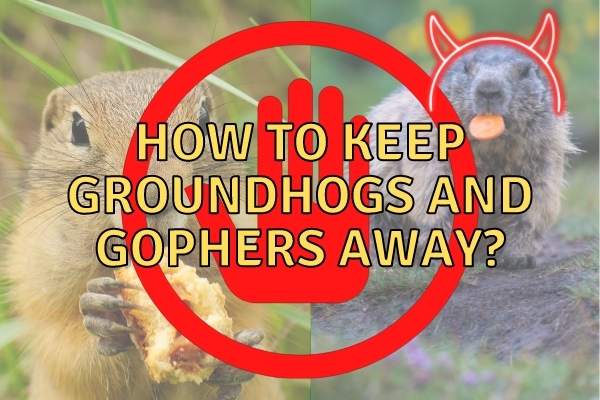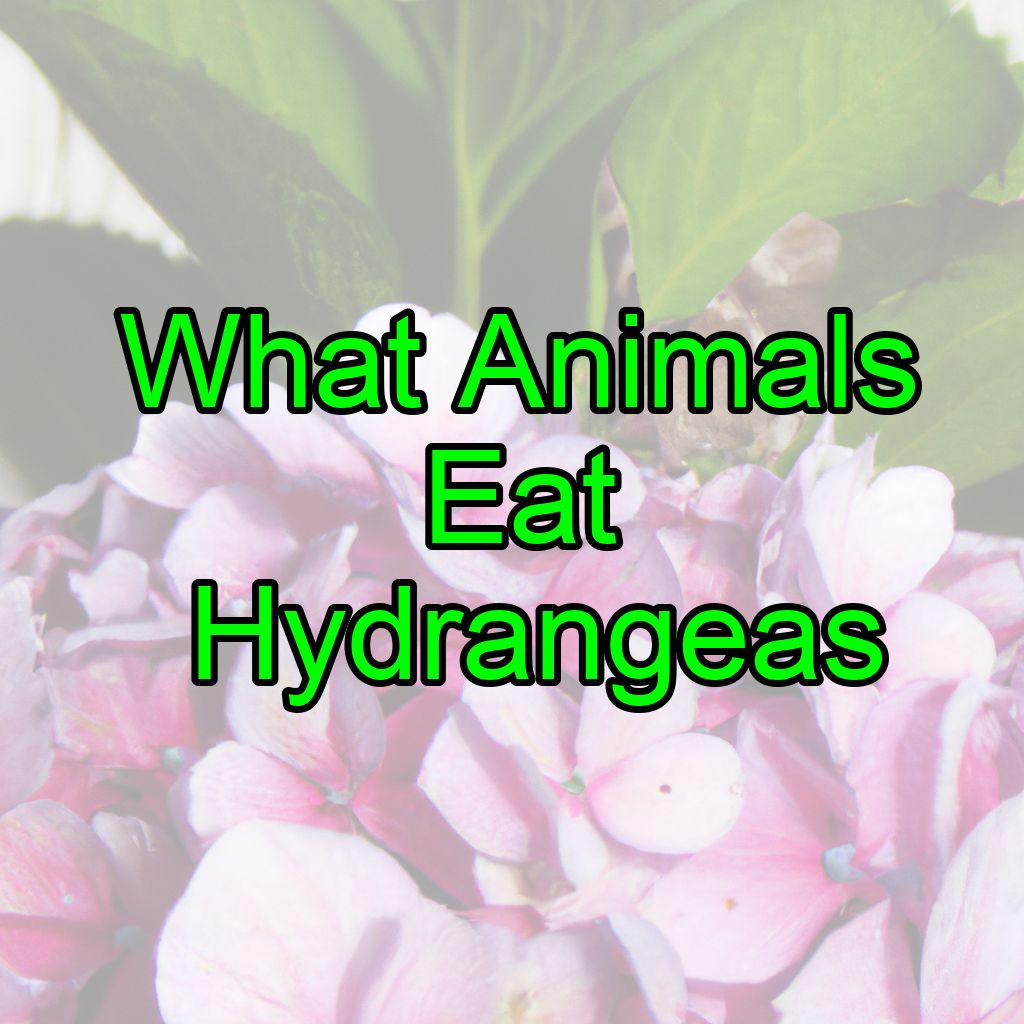Hydrangeas are beautiful flowering shrubs that are popular with gardeners.
Hydrangeas are primarily consumed by herbivorous animals such as deer, rabbits, and groundhogs.
Additionally, some insects like aphids, spider mites, and Japanese beetles may feed on hydrangea leaves and flowers. To protect your hydrangeas, consider using fencing, repellents, or introducing natural predators to control the insect population.
They have large, colorful blooms that can brighten up any garden.
However, if you have hydrangeas in your garden, you may notice that they sometimes get eaten by animals.
In this blog post, we will explore which animals eat hydrangeas.

Contents
Animals That Eat Hydrageas
As a biologist and backyard owner with a deep interest in flora and fauna, I am delighted to share my knowledge and personal experiences regarding animals that eat hydrangeas. Hydrangeas, with their vibrant blooms and lush foliage, are undoubtedly a prized addition to any garden or landscape. However, it is crucial to understand that certain animals may find these beautiful plants equally enticing as a food source.
One of the most common culprits in devouring hydrangeas is the deer. These graceful creatures possess a voracious appetite for various plants, and hydrangeas are no exception. I vividly remember the time when I first noticed the telltale signs of deer grazing on my cherished hydrangea bushes. The delicate serrated edges of the leaves had been nibbled, and the flowers were noticeably absent. It was disheartening to witness the impact of these majestic animals on my beloved hydrangea collection.
However, deer are not the sole perpetrators when it comes to hydrangea consumption. Rabbits are notorious for their nibbling habits, and hydrangeas are often among their preferred menu items. There have been instances where I’ve spotted rabbits hopping around my garden, leaving behind bite marks on the hydrangea leaves. These small yet determined creatures can cause significant damage, especially to young hydrangea plants.
Apart from deer and rabbits, another potential hydrangea eater is the woodchuck or groundhog. I recall the time when a woodchuck burrowed near my garden and made a feast of my hydrangea blooms. These rodents possess sharp incisors and an insatiable appetite, and unfortunately, my hydrangeas became a casualty of their culinary preferences.
It is important to mention that certain insects can also cause damage to hydrangeas. For instance, the hydrangea scale insect (Phenacoccus spp.) feeds on the sap of hydrangea plants, leaving behind a sticky residue called honeydew. This can lead to the growth of sooty mold, a black fungal growth that further weakens the plants. Additionally, caterpillars, aphids, and leafhoppers can also feed on hydrangeas, affecting their overall health and appearance.
In my experience, protecting hydrangeas from these hungry creatures requires a multi-faceted approach. Physical barriers such as fences, netting, or individual plant cages can be effective in keeping deer, rabbits, and woodchucks at bay. Additionally, repellents with odor or taste deterrents specifically designed for these animals can be applied to deter them from feasting on hydrangeas. Regularly inspecting the plants for signs of insect infestation and promptly addressing any issues can also prevent further damage.
Finally, it is important to note that while hydrangeas may be vulnerable to animal consumption, they are also resilient and capable of regrowth. With proper care, attention, and preventive measures, it is possible to maintain a beautiful hydrangea garden while coexisting with the animals that may find these plants enticing.
In conclusion, hydrangeas can be tempting treats for various animals, including deer, rabbits, woodchucks, and certain insects. Drawing from my personal experiences as a biologist and backyard owner, I have witnessed the impact of these animals on my hydrangea plants. By implementing a combination of physical barriers, repellents, and vigilant monitoring, it is possible to protect hydrangeas from these hungry creatures and enjoy the beauty of these plants in our gardens.
1. Deer
Deer are one of the most common animals that eat hydrangeas. They are attracted to the plant’s tender leaves and flowers, particularly in the spring and summer when other food sources are scarce.
If you have a deer problem in your area, it can be difficult to keep them away from your hydrangeas. Some tips for deterring deer include:
- Planting deer-resistant plants around your hydrangeas
- Using deer repellent sprays or granules
- Installing a physical barrier such as a fence or netting
2. Rabbits
Rabbits are another common animal that eats hydrangeas. They like to nibble on the leaves and flowers, particularly in the spring when they are young and tender.
Rabbits can be difficult to keep away from your hydrangeas, but some tips for deterring them include:
- Planting rabbit-resistant plants around your hydrangeas
- Using rabbit repellent sprays or granules
- Installing a physical barrier such as a fence or netting
3. Groundhogs
Groundhogs, also known as woodchucks, are herbivorous rodents that can pose a significant challenge to gardeners when it comes to protecting flowers, including hydrangeas, from their voracious appetites. Let’s delve into more details about groundhogs and explore effective measures to keep them away from your precious flowers.
Groundhogs are stout-bodied mammals that belong to the marmot family. They have strong limbs and sharp incisors that allow them to burrow efficiently and consume a variety of plant materials. These creatures are primarily herbivores, with a diet that includes grasses, clover, fruits, vegetables, and the occasional taste for flowers. Unfortunately, hydrangeas can fall victim to their browsing behavior, as groundhogs find the tender foliage and blooms quite appealing.

To safeguard your hydrangeas from groundhog depredation, it is crucial to employ preventive strategies that create barriers and deter their presence. Here are some effective measures to consider:
- Fencing: Installing a sturdy fence around your garden can be an excellent first line of defense against groundhogs. Opt for a fence made of wire mesh or hardware cloth that is at least three to four feet high and extends at least one foot below ground level. This helps prevent groundhogs from burrowing underneath and reaching your flowers. Ensure that the fence is securely anchored to the ground to prevent any gaps or openings.
- Burying wire mesh: To further fortify your defenses, bury a portion of wire mesh vertically around the perimeter of your garden, extending at least one foot deep. This acts as an underground barrier that deters groundhogs from digging their way into your flower beds.
- Natural deterrents: Groundhogs have a keen sense of smell, so utilizing natural repellents can help discourage them from approaching your hydrangeas. Substances like garlic, hot peppers, or predator urine (available at garden centers) can be strategically placed around the garden perimeter or near the targeted plants. These scents can act as repellents and deter groundhogs from venturing too close.
- Trapping and relocation: If groundhog activity persists despite your efforts, you may consider live-trapping and relocating them. Check local regulations and laws regarding trapping and relocation, as they can vary. Traps should be appropriately sized and baited with enticing foods such as fruits or vegetables. Once trapped, handle the groundhog with care and release it in a suitable, designated area far from your property.
- Garden maintenance: Keeping your garden well-maintained can also help discourage groundhogs. Regularly remove any fallen fruits or vegetation that may attract them, as well as piles of debris or brush that could serve as hiding spots.
Remember, persistence and consistency are key when dealing with groundhogs. It may take a combination of these methods and ongoing vigilance to effectively deter them from your flowers. Also, keep in mind that groundhogs are adaptable creatures, so it’s important to regularly monitor your garden and adjust your preventive measures as needed.
4. Insects
Insects can also damage hydrangeas, particularly aphids, spider mites, and Japanese beetles. These insects like to feed on the leaves and flowers of the plant, which can cause discoloration and deformities.
Some tips for controlling insect damage include:
- Using insecticidal soap or neem oil sprays
- Planting companion plants that attract beneficial insects such as ladybugs and lacewings
- Removing infected leaves and flowers promptly to prevent the spread of the infestation
5. Humans
Finally, humans can also cause damage to hydrangeas.
Overwatering, underwatering, and improper pruning can all harm the plant.
To keep your hydrangeas healthy, some tips include:
- Watering the plant deeply but infrequently
- Pruning the plant in the fall or early spring, after the blooms have faded
- Fertilizing the plant with a balanced fertilizer in the spring and fall
Conclusion
In conclusion, hydrangeas can be vulnerable to a variety of animals and insects.
However, with proper care and attention, you can help keep your hydrangeas healthy and beautiful.
By planting companion plants, using repellents, and installing physical barriers, you can help keep animals and insects away from your hydrangeas.
And by following proper watering and pruning techniques, you can help ensure that your hydrangeas thrive.




